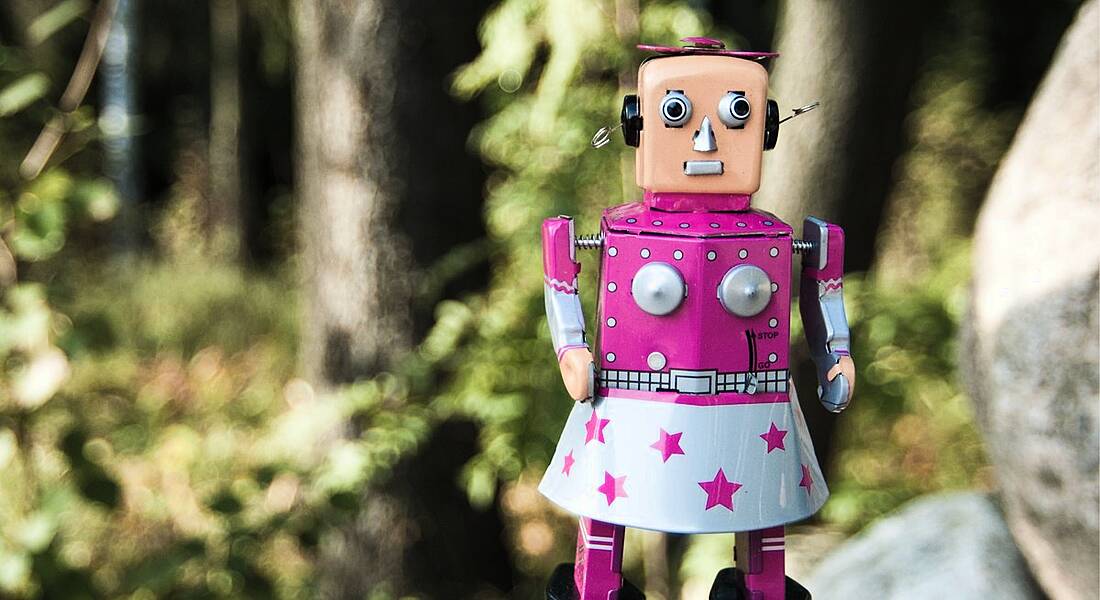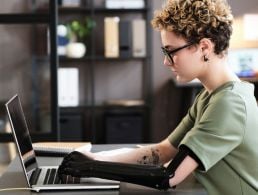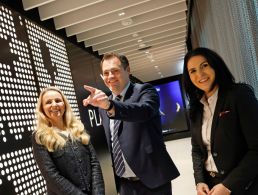It’s International Women’s Day, and we’re looking at the need for women in AI and robotics, and the danger posed by the gender gap.
The gender gap in the tech industry appears to be a continuing trend. While there is much discussion around ways to rectify the problem and narrow the gap, studies show that it doesn’t seem to be getting any smaller.
Aside from the obvious negative stereotypes this can encourage – that women aren’t able or smart enough for tech careers etc – a lack of women across a whole industry means a lack of diversity.
Due to the direction of the future, the tech industry gender gap will not be a contained issue, as technology forms an even bigger part of society.
Artificial intelligence (AI) is one of the biggest areas in tech at the moment. It’s becoming a part of everyone’s office, home and school, and will have a major role in the future of work.
In a panel discussion at the World Economic Forum, Joi Ito, director of MIT Media Labs, warned that many AI engineers generally come from similar backgrounds.
A lack of diversity in AI programming is particularly troubling because these systems will be designed to see the world as their creators do, leaving huge gaps in knowledge.
On that note, does that mean the AI systems of the future will inadvertently be sexist?
‘We’re in great danger of undoing the current fight against sexism’
– ANDRA KEAY
Andra Keay is the managing director of Silicon Valley Robotics, an industry group supporting the innovation and commercialisation of robotics technologies. She believes a lack of diversity in AI could lead to the unravelling of the positive steps we’ve already taken.
“I think we’re in great danger of undoing the current fight against sexism, and the fight for human rights, democracy and equality,” she said.
“Inherently having only a section of the population involved in the practice of AI means that we are missing out on a range of inputs and insights. And we are also seeing that AI is, by design, susceptible to learning stereotypes, and then perpetuating them.”
Why aren’t there more women in AI?
There appears to be crossed wires surrounding AI. Perhaps there is too much focus on algorithms and the robotics themselves rather than ‘bigger picture’ ideas about how AI can help society.
Olga Russakovsky, a postdoctoral research fellow at the Carnegie Mellon Robotics Institute, believes that being overtly focused on the simple task of learning how to code can dehumanise AI. Speaking to Quartz, she said: “The way we teach technology and AI, we start from, ‘Let us teach you how to code’ … So we wind up losing people who are interested in more-high level goals.”
Russakovsky created the world’s first AI summer camp for girls in 2015, holding campers’ interest by demonstrating how robots could benefit society.
With stereotypes starting young and Russakovsky’s idea that teaching tech could be routed to the simple task of learning how to do it and not how it can help the world, it’s no wonder there isn’t much diversity. The average representation of women in AI and robotics research fields and commercial industries is below 5pc, according to Keay.
So why aren’t there more women in AI? Keay believes that while the number of women in the sector is already low, the proportional visibility of women is even lower. “If there’s an 80-20 proportion of men to women in AI, are we even seeing that reflected on stage at conferences, in articles or in management positions? Sadly not.”
Keay said that in order to correct the lack of women in AI, change needs to occur from the top down. “We need more women leading companies and countries,” she said.
With stereotypes that will be unconsciously ingrained in an AI world created predominantly by men, certain falsehoods could become harder to question when they come from robots.
AI gone wrong
We are naturally attuned to believe that robots and machines are unbiased and therefore unlikely to make errors based on such bias.
Keay said this was one of the biggest risks with AI. “When things happen and we don’t see a person involved, we are less likely to see that the process may be biased, or wrong. And it’s much harder for us to know how to take action against an algorithm,” she said.
If AI has taught us anything, it’s that the machine in question can only be as intuitive as the person or people that programmed it. However, that doesn’t make it any easier to discount.
AI will be able to learn and develop on its own, but bots that have already been created to learn from the world around it have proven that they are vulnerable to learning the most prominent bad parts of humanity, and there are fears that AI will become the ultimate expression of masculinity.
“We are developing the ability to create highly tailored individualised responses to the world, which may make each of us happy as an individual, but hurt our society as a whole. We need to be creative and keep diversity and the unfamiliar, and even the adverse, in our experience of life.”
Keay concluded that if we take steps to ensure diversity within AI, the same technology that is currently on route to damage society can be used for good. “If we understand how the problems form, then we can also create solutions.”




